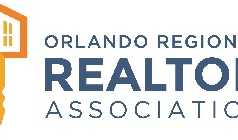LAS VEGAS – A modest recovery for existing-home sales is expected in 2008 as the impact of the credit crunch subsides, while pending home sales indicate near-term stability, according to the latest forecast released at the National Association of Realtors (NAR) Conference & Expo this week.
Lawrence Yun, NAR chief economist, said the housing market will improve from a steady unleashing of pent-up demand, and from a wide abundance of safer mortgage products. “The level of pent-up demand reaching the market next year is a bit uncertain, and it is possible for even higher home sales activity than we’re forecasting if buyers regain their confidence about the long-term benefits of homeownership,” he said. “Over the near term, home sales are likely to be fairly flat as the lingering impact of the credit crunch filters through the system through the end of the year.”
The Pending Home Sales Index, a forward-looking indicator based on contracts signed in September, rose 0.2 percent to a reading of 85.7 from an index of 85.5 in August. It was 20.4 percent lower than the September 2006 level of 107.6. “Even with relatively low fourth quarter sales, 2007 will be the fifth highest year on record for existing-home sales. The median existing-home price in 2007 will have fallen by less than 2 percent from an all-time high set in 2006,” Yun said.
The PHSI in the Midwest rose 5.4 percent in September to 82.3 but is 14.4 percent below a year ago. In the South, the index increased 1.5 percent to 99.3 but is 19.7 percent lower than September 2006. The index in the West slipped 0.1 percent in September to 80.5 and is 25.6 percent below a year ago. In the Northeast, the index dropped 10.1 percent in September to 69.5 and is 23.1 percent below September 2006.
Existing-home sales are projected at 5.67 million this year, edging up to 5.69 million in 2008, in comparison with 6.48 million in 2006 – the third highest year on record. Existing-home prices are expected to decline 1.7 percent to a median of $218,200 for all of this year and hold essentially even in 2008 at $218,300.
“Some markets are still going strong, such as Austin and Raleigh, while others are showing early signs of recovery, like Denver and Boston. However, a vast portion of the nation’s mid-section is underpriced in relation to income, and prices in some markets could rise notably with good local job gains,” Yun said. “At the same time, a significant rise in foreclosures in some areas could delay the recovery.”
New-home sales will probably total 796,000 in 2007 and 693,000 next year, below the 1.05 million last year; no real improvement is seen for new homes until 2009. Because builders have rightly made drastic cuts in production, housing starts, including multifamily units, are forecast at 1.35 million this year and 1.14 million in 2008, down from 1.80 million in 2006. The median new-home price is estimated to drop 1.6 percent to $242,500 in 2007 before rising 0.4 percent to $243,600 in 2008.
“Contrary to perceptions, conventional mortgages are widely available at favorable interest rates for the bulk of home buyers,” Yun said. “The pricing and availability of jumbo mortgages has improved, and FHA loans for home purchases – up 58 percent in the third quarter – are replacing subprime mortgages to serve the needs of low- and moderate-income buyers.”
The 30-year fixed-rate mortgage should rise slowly to the 6.6 percent range by the end of next year, although cuts in the Fed funds rate will help short-term interest rates.
“Home buyers in it for the long haul nearly always come out ahead in building wealth. Given the leverage in purchasing a home, the average return on a 5 percent downpayment over 10 years is usually three to five times greater than stock market returns,” Yun said. “When people compare investment returns, they often overlook the power of leverage in the housing market.”
He said a $10,000 downpayment on a median-priced home, at a typical appreciation rate of 5 percent, would be worth $110,000 after 10 years. That same amount invested in the stock market for the same amount of time, assuming 10 percent annual appreciation, would be worth $23,600. “That’s why housing is the best long-term investment most families ever make – the longer you own, the better your investment,” Yun said.
Growth in the U.S. gross domestic product (GDP) is seen at 2.1 percent in 2007, down from a 2.9 percent growth rate last year; GDP growth is projected to improve to 2.8 percent in 2008.
The unemployment rate will probably average 4.6 percent for 2007, unchanged from last year, but edge up to 4.9 percent in 2008. Inflation, as measured by the Consumer Price Index, is likely to be 2.8 percent both this year and in 2008, compared with 3.2 percent in 2006. Inflation-adjusted disposable personal income is forecast to grow 3.5 percent in 2007, up from 3.1 percent last year, and then ease to 2.4 percent in 2008.
© 2007 FLORIDA ASSOCIATION OF REALTORS®





